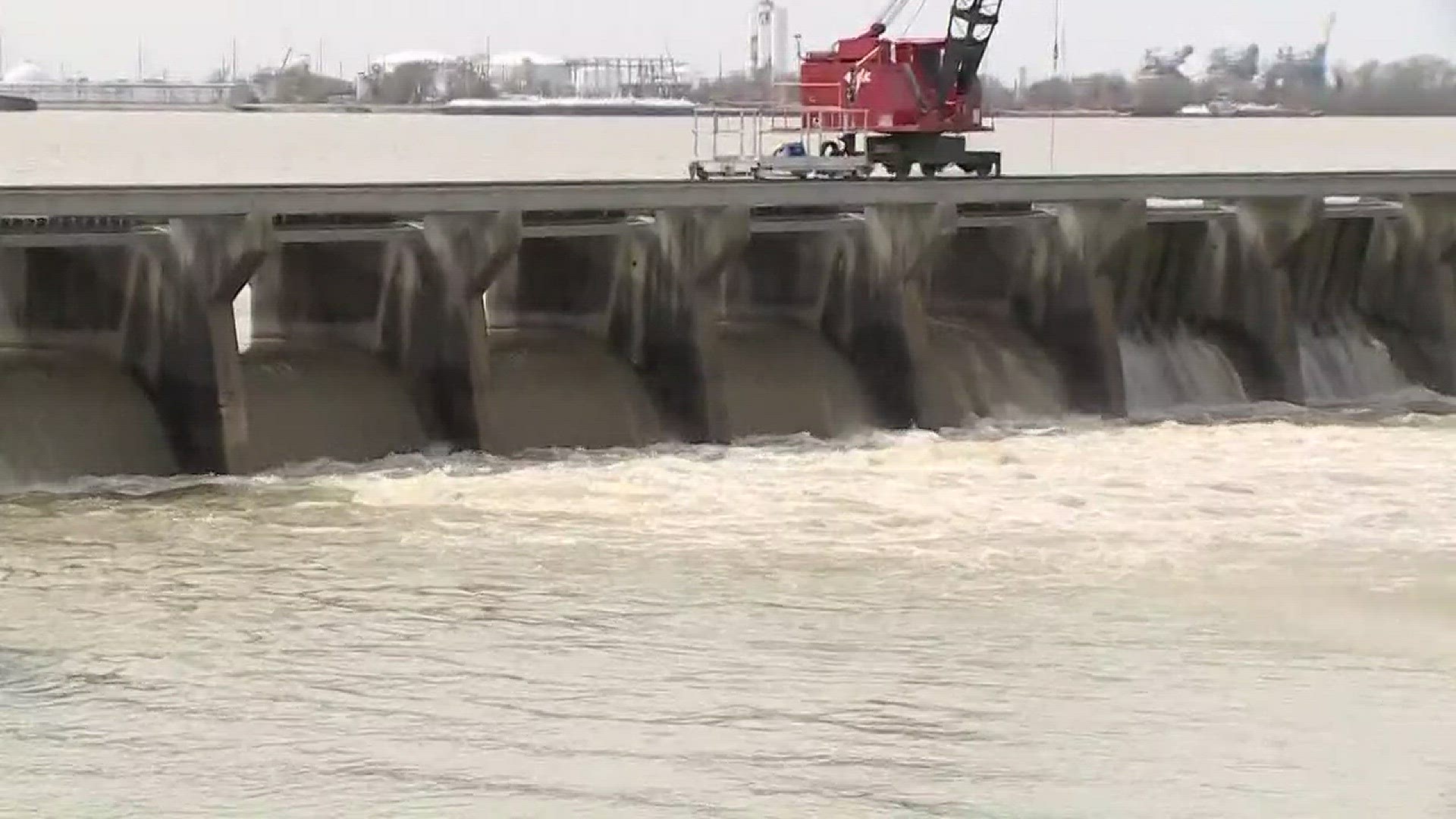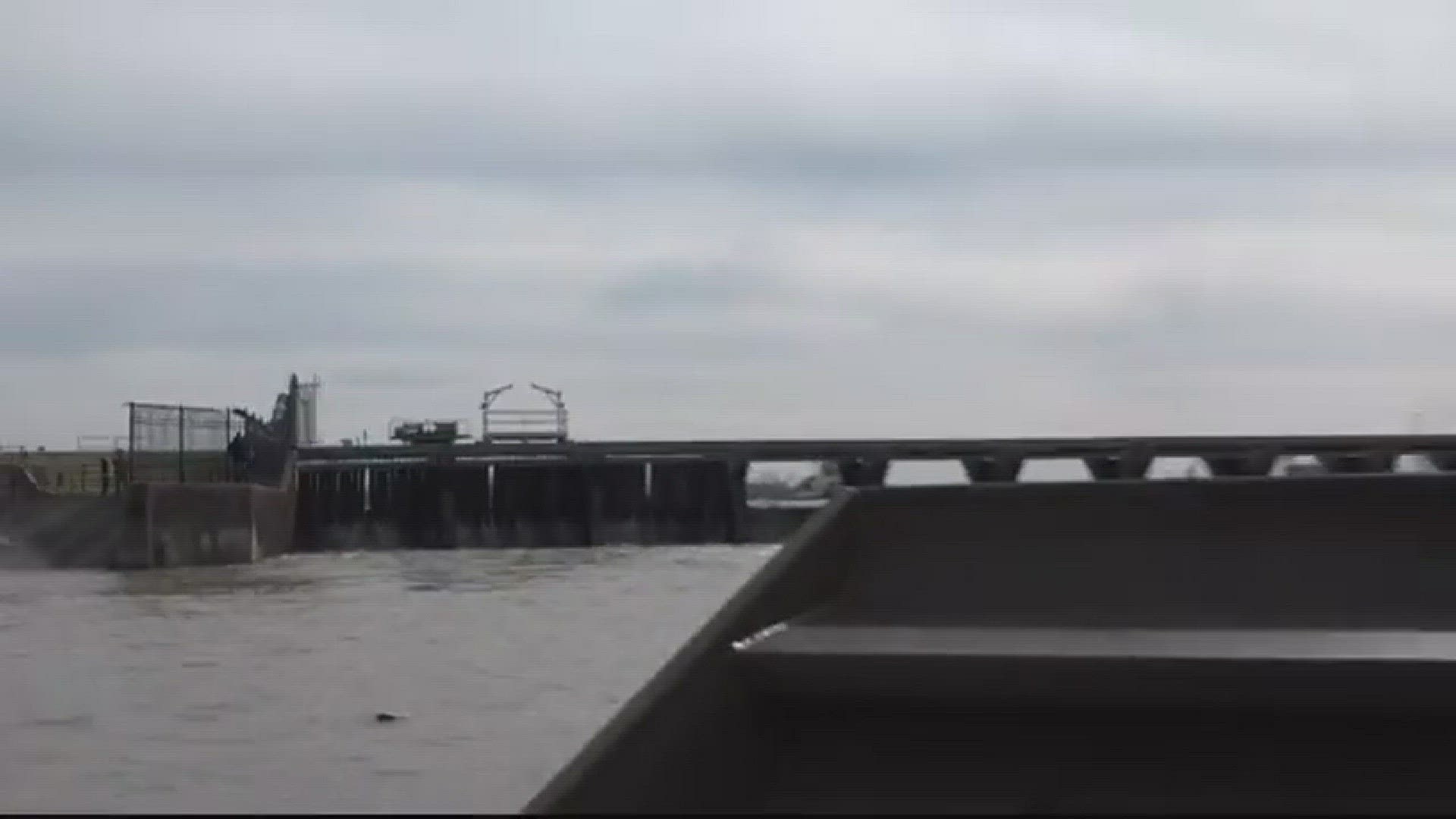NORCO, La. -- Hundreds of people gathered at the Bonnet Carre spillway Thursday morning to witness a site that is rare in the history of the flood-control structure: its operation.
The Army Corps of Engineers decided to open what could be more than 100 of the 350 bays after the rising Mississippi River began to flow higher and faster than is safe for the levees in the metro New Orleans area.
VIDEO: Up close look at the opening (can't see it? click here)
Major Gen. Richard Kaiser, commander of the Mississippi Valley Division and president of the Mississippi River Commission, said the goal in opening the spillway is to ensure that the levees that protect New Orleans and other downriver communities are not compromised.
“As water builds, you get an excessive amount of pressure and you’ll have water that tries to find its way under the levee. By reducing the level of water, we reduce the pressure.”
Thursdays work called for opening eight bays. It was the 12th time the spillway was used since it opened in 1931.
ADJUSTMENTS TO BE MADE
Col. Michael Clancy with the Corps said this year’s high river is no record breaker, but the need to open bays was prudent.
“It’s a small opening today, and we will adjust every single day as the river continues to rise we will increase the number of bays opened,” Clancy said.
The trigger to open the spillway is when the river reaches 17 feet at the Carrollton gauge downriver in New Orleans and when water flows at 1.25 million cubic feet per second. That flow rate is enough to fill the Louisiana Superdome in one second.
Clancy said that anytime the spillway has been opened in the past, it has been later. But the Corps, he said, follows orders from elsewhere when making that call.
“March is a little bit early. Typically April, May is the high river,” he said. “Mother Nature gets the final vote.
ENVIRONMENTAL CONCERNS FOLLOW OPENING
The rush of fresh water into brackish Lake Pontchartrain 6 miles away has an effect on that body of water and wildlife that calls the river home.
“We’re going to have airboats right behind the structure to capture and return to the Mississippi any endangered pallet sturgeon that happen to come through the structure,” Clancy said.
In 2016, officials returned nine; in 2011 they returned 20.
“Every time we operate the spillway it has a slightly different effect on Lake Ponchartrain, based on the time of year, temperature of the water, the amount of water put through the spillway,” Clancy said.
John Lopez with the Lake Pontchartrain Basin Foundation said the amount of river water that will make its way to the lake is enough to displace all the water there, which can affect its inhabitant.
“Basically, all the normal lake water that has a little bit of salinity and also some of the fish species associated with it tend to be pushed out or displaced by that river water,” he said. “In its place you have water that completely fresh and it’s high in nutrients. There’s that immediate effect and that also becomes the recipe for an alga bloom down the line.”
Ultimately, though, the fresh water stimulates growth, he said.
“Those nutrients basically … create algae, sometimes too much, but that algae is also the base of the food chain,” he said. “Small organisms eat the algae, large organisms eat those organisms and so forth.”
ONLOOKER REMEMBERS FIRST OPENING
While some people have only seen the spillway operate a time or two, Colleen Perilloux Landry is a rare exception. She said she’s been on site every time it’s opened in the past, starting as a baby in her mother’s arms when it first opened in 1937.
“To us it’s a marvel. We grew up on the river and to watch this happening and to think the river has controlled so much of our lives, it’s just a beautiful thing,” she said Thursday as she watched the first pins lift out of the way. “More people should come out and see it.”
She said her father wrote a letter to President Franklin Roosevelt to come see the spillway, and he showed up.
“All the school children were brought, and I remember that,” she recalled. “They lined the levee and they welcomed the president.”


